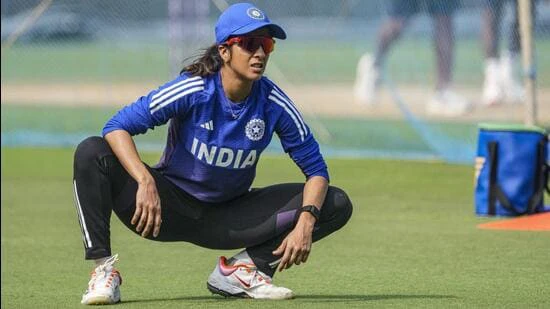Visakhapatnam: Such is the excitement for the Women’s ODI World Cup’s first sold out fixture between India and Australia that locals at the Rushikonda beach are discussing the logistics for match day.
“Australia, danger team”, chimed a vendor at the beach, which was met with a nod by an impressed spectator, who expects to be in the 26,000-capacity stadium on Sunday.
Australia, the seven-time winners, are unbeaten in the tournament. India have a lopsided record against them in ODIs. Although closely contested, they also lost the three-match series 2-1 in the lead-up to the World Cup at home.
What was expected to be India’s most challenging phase in the tournament began in grim fashion in Visakhapatnam. They were expected to be challenged by SENA (South Africa, England, New Zealand, Australia) countries and a spirited South Africa handed them a three-wicket defeat and reality check on Thursday. India are under pressure to bounce back as they face their most formidable opponents.
However, India have a few things going for them. Australia are usually seen as unbeatable, and India’s three wins in the tournament history can help battle those nerves. The sensational 171* by Harmanpreet Kaur to knock them out in the 2017 semi-final is still fresh in memory. India also know the pitch conditions well.
“The pre-World Cup camps here really helped because we got familiar with the ground conditions, dimensions, how fast the ball travels, which helped our fielding. Understanding how the pitch behaves after the first innings has also been useful,” said Sneh Rana.
But top-order batting has been the cause of India’s woes thus far.
SLA battles
A trend in this World Cup has seen left-arm orthodox spinners being highly effective, almost game-shaping. They have taken 40 wickets in 25 innings at an average of 19.02 and economy of 4.0 until Friday’s game. Their success suggests control and penetration in the middle overs, which is where both India and Australia rely heavily on spin.
Although India historically rely more on the off-spin of Deepti Sharma and Sneh Rana, the recent trend and surfaces like Visakhapatnam offering grip, India will be tempted to use N Sree Charani strategically against Australia’s middle-order right-handers. They may even bring in the experienced Radha Yadav, also a left-arm spinner.
Radha was doing the drills one day before the match eve, as were Renuka Thakur, Smriti Mandhana, Harmanpreet Kaur, Arundhati Reddy and Amanjot Kaur. India opted to bat against U-19 Andhra net bowlers, facing a combination of one left arm spinner, one leg spinner, besides right-arm spinners. On match eve, Uma Chhetry, Jemimah Rodrigues and Pratika Rawal turned up for the optional practice with all opting to target range-hitting against slow left-armers.
Australia are expected to slot Sophie Molineux back into the XI. She played against New Zealand and made an immediate impact, picking up 3/25. Expect skipper Alyssa Healy to introduce her early on against Smriti Mandhana and Jemimah – both have occasionally been circumspect against left-arm spin. She’s typically used in short, sharp bursts, often around the second powerplay or when batters try to accelerate.
India have been prioritising batting depth so far and instead compromising on a sixth bowling option. Against Australia, however, that strategy could shift.
Dot it down
So far, India have been taking their dots too literally. They have a dot-ball problem and it’s been a predictable pattern so far – especially in the middle overs. They got away against Sri Lanka (dot % 43) and Pakistan (56%) but against stronger oppositions, it came back to bite, as they found out against South Africa (58%). In fact, over the three matches, the percentage has become progressively higher. Of all the teams, Australia are least likely to be generous about it.
“It seems to be throughout the middle overs that some sides have been managing to squeeze oppositions, but you can get off to a good start during the powerplay and set a platform. That’s going to be really important to put a good total out there or chase something down. There’s a fine balance in that regard, but I think both of us at the top of the order are quite aggressive so we’re not exactly going to curb that at any point,” said Australia captain Alyssa Healy.
Even though India look the most attacking at the start of the innings, numbers suggest they are also slow starters compared to Australia, who have a lower dot ball percentage and a higher boundary ball percentage. India would be hoping to address that along with dropping strike rates and strike rotation.
Barring Indore, the pitches in this World Cup haven’t exactly been a batter’s paradise. Healy had anticipated a few totals in excess of 300 after the ODI series. She believes her team has been able to recalibrate well after the initial expectations went wrong.
